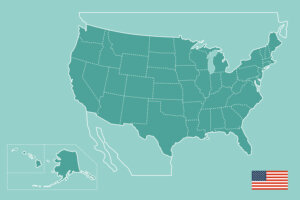It always happens to trainers who are well-versed in speaking/communicating in classrooms and smaller groups. Inevitably they are tagged one day by their bosses to speak at the regional or national conference, participate in the plenary, or even act as a master of ceremonies. To the trainer perfectly comfortable in his or her training environment, the idea of speaking to a larger, dispassionate group is daunting. For the boss, the caveat is the assumption that a good communicator should be easily able to speak anywhere to any audience as if it makes no difference at all.
But size does make a difference. Some would think in fear level, but that can be dealt with more easily than you think. Personally, I like a bigger audience. I like the idea that I have to bring them all to me like The Pied Piper, and thus find it more challenging. The bigger the crowd, the more impersonal the individuals. For most of us that makes the audience seem less ferocious. Yet, the smaller audience is more attentive to your every move–or hesitation. Both groups want you to succeed, however.
While I love the smaller groups, I have more experience with the larger groups of 250 to 500 at National and Regional conferences. I am an introverted actor, if you can believe that, but I still love doing public speaking. Size does matter when it comes to an audience. There are some differences.

Theatre actors know this because theaters differ widely in the size of the house. I performed Hogan in O’Neill’s MOON FOR THE MISBEGOTTEN in The Littlest Theatre in Oregon City, Oregon–just outside Portland; the theater prided itself on seating only 36 guests. In Colorado Springs, Colorado, I directed BLITHE SPIRIT and ROMANTIC COMEDY to an audience of 1600.
Although the performance space on stage was slightly different, the actors had to expand their gestures and movements so the entire audience could receive comparable performances. Sound must also be amplified. Sound can be improved with the use of strategically placed mikes or mikes hidden on the actors themselves. Musical theatre has been using them for years. Even so few theaters use them for non-musical plays–even with 1600 in the audience, preferring the age-old use of actor projection.
My character, Hogan, is a blustery and loud fellow, which would have made the larger audience pretty easy to play to. I had the opposite situation so I had to make sure I didn’t scream at my audience. The small, closer audience can see every wrinkle, every misstep, every expression, or lack thereof; for an actor, that means you can’t let up for an instant on character. In the same way, the trainer doesn’t want lose focus on learning and leave one smaller scale audience member behind either.
Naturally, it makes sense that with a large group that you can’t be quite as intimate as you can with a smaller group, and you need to be a bigger you. Like an actor on stage versus the actor in front of a camera. The bigger the area, the bigger the facial expressions and the gestures.
Here’s how I do it. While you can’t connect with individuals as you can in a small group, you can connect with groups who will think you are connecting with them personally. Don’t worry it’s a good thing; just don’t tell them. I try to connect with people in various locations in the room so I can spread my wings and move a bit, and concentrate my talk in their direction and in the other focused directions as possible without making it really obvious. Notice I said I wasn’t talking to them directly but about twenty people seated around them think I’m speaking to them directly as well.

Still, it’s like being a lion tamer–only with more lions. You can still tame them with your charm; your charm just has to be bigger to fit the room. You can’t be demure. And, you may have to get a read on your audience when you’ve said something important or profound by turning to the other side of the room and ask, “Right?” “Do you see?” Something like that.
Actually, if it is possible to transition to the larger audience, the best way to get started is to have a partner you feel very comfortable sharing the stage with. First, you follow your partner’s lead with the audience, and then your own lead as you feel more comfortable. Soon you won’t need the partner.
I happen to like the dynamic of two speakers or trainers working a group this size because you can more easily keep the audience engaged and surprised from time to time. For me, that’s fun. If you need a partner, give me a call.
—
For more resources about training, see the Training library.
 Sections of this topic
Sections of this topic














